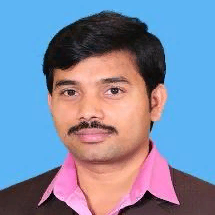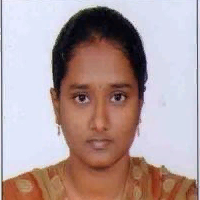International Journal of Engineering and Manufacturing (IJEM)
IJEM Vol. 9, No. 4, 8 Jul. 2019
Cover page and Table of Contents: PDF (size: 364KB)
Author(s)
Index Terms
PID controller, Tuning Methods, Time-Response Specifications
Abstract
The Proportional Integral Derivative (PID) controllers are most commonly used in industries to compensate several numbers of practical industrial processes by the virtue of their simplicity and robustness. Several tuning methods exist for parameter tuning of PID controller. In this paper PID control design for second order system has been done with various methods. The effectiveness of tuning methods has been compared based up on time response specifications.
Cite This Paper
RamaKoteswara Rao Allaa, Lekyasri N, Rajani K," PID Control Design for Second Order Systems", International Journal of Engineering and Manufacturing(IJEM), Vol.9, No.4, pp.45-56, 2019. DOI: 10.5815/ijem.2019.04.04
Reference
[1]Astrom K.J., Hagglund T. PID controler: theory, design and tuning. 2nd ed. Research Triangle Park (NC): ISA; 1995.
[2]Nagrath J., Gopal M., “Control System Engineering”, New Age International Publications, 3rd Edition, 2002.
[3]J. G. Ziegler and N. B. Nichols, “Optimum Settings for Automatic Controllers,” Trans. ASME, Vol. 64, pp. 759-768, 1942.
[4]Venkatashankar, V.; Chidambaram, M. (1994). Design of P and PI controllers for unstable first-order plus time delay systems. International Journal of Control, 60(1), 137-144.
[5]RamaKoteswaraRao, A.; Choudhary, N.; Lather, J.S.; Pahuja, G.L. (2014), PIV and lead compensator design using Lambert W function for rotary motions of SRV02 plant. Proc.10th IEEE International Colloquium on Signal Processing & its Applications (CSPA), Kula Lumpur, Malaysia, March 07-09:266-270.
[6]Normey-Rico, J.E.; Bordons C.; Camacho E.F. (1997). Improving the robustness of dead-time compensating PI controllers. Control Engineering Practice, 5(6), 801-810.
[7]Chen D, Seborg DE. “PI/PID controller design based on direct synthesis and disturbance rejection”. IndEngChem Res 2002;41:4807–22.
[8]Chien IL, Fruehauf PS. “Consider IMC tuning to improve controller performance.” Chem Eng Prog 1990; 86:33–41.
[9]Kavdia Mahendra, Chidambaram M. “On-line controller tuning for unstable systems”. ComputChem Eng 1996; 20:301–5.
[10]B.W. Bequette. Handbook of Process Control Modeling, Design and Simulation. pp. 285-307.
[11]Panda RC. “Synthesis of PID tuning rule using the desired closed-loop response.” IndEngChem ,Res 2008;47(22):8684–92.
[12]Rivera DE, Morari M, Skogestad S. “Internal model control. 4. PID controller design.” IndEngChem Process Des Dev. 1986; 25:252–265.
[13]RamaKoteswaraRao, A., Lather, J.S., Pahuja, G.L., “Comparison Of PI Controller Performancefor First Order Systems with Time Delay”, Journal of Engineering Science & Technology (JESTEC),Volume 12, Issue 4, April 2017.
[14]RamaKoteswaraRao A., Lather J.S., Pahuja G.L., “PI Controller Performance Analysis Using Lambert W Function Approach for First Order Systems with Time Delay”, International Journal of Advanced Science and Technology, SERSC, Korea, vol. 86, pp. 1-8, January 2016.
[15]C.C Hang, W.K.Ho, LS Cao, “A comparison of two design methods for PID controller”, ISA transaction, vol.33, pp.147-151,July 1994.
[16]R. C. Panda, “Synthesis of PID Tuning Rule Using the Desired Closed-Loop Response”, Ind. Eng. Chem. Res. vol. 47, pp.8684–8692, October 2008.
[17]V. Vijayan, R.C. Panda, “Design of PID controllers in double feedback loops for SISO systems with set-point filters”, ISA Transactions, vol. 51, pp.514–521,July 2012.
[18]R D Kokate , L .M .Waghmare, “IMC-PID and Predictive Controller Design For a Shell and Tube Heat Exchanger” Emerging Trends in Engineering and Technology (ICETET), 2009 2nd International Conference on, vol., no., pp.1037,1041, 16-18 Dec. 2009.
[19]J. S. Guillermo, A. Datta and S.R Bhattacharyya , PID Controllers for Time-Delay Systems, Birkhauser Boston, 2005.
[20]Lee Y, Park S, Lee M, Brosilow C. “PID controller tuning for desired closed-loop responses for SISO systems.” AIChE J. 1998; 44:106–115.
[21]V.Vijayan, Rames. C Panda “Design of PID controller in double feedback loops for SISO systems with set-point filters.” ISA Transactions 51 (2012) 514–521.
[22]Yuan-Jay Wang, Tuning of Optimal and Robust PID Controller for Open-Loop Unstable First-Order plus Time Delay Systems, proceedings of 31st Chinese control conference,pp2459-2464,2012.
[23]Yuan-Jay, Calculation of All Robust PID Type Controllers for Unstable High-Order Time Delay Systems Based on Gain and Phase Margin Specifications, proceedings of 31st Chinese control conference,pp2775-2780,2012.
[24]Jan Cvejn, Sub-optimal PID controller settings for FOPDT systems with long dead time, Journal of Process Control 19,pp1486–1495,2009.
[25]Wiesław Krajewski, Umberto Viaro, “ON ROBUST PID CONTROL FOR TIME–DELAY PLANTS”, 978-1-4673-2124-2/12, IEEE, pp540-545,2012.
[26]De-Jin Wang, Synthesis of PID controllers for high-order plants with time-delay, Journal of Process Control 19,pp1763–1768,2009.
[27]G. Martelli, Stability of PID-controlled second-order time-delay feedback systems, Automatica,Vol.45, pp2718-2722,2009.
[28]Junkang HAO, Haikuo He, Lilong DU, Xin DU, “A New PID Controller for nonlinear networked control systems with stochastic time delays”, Fifth International Conference on Intelligent Computation Technology and Automation, pp467-470,2012.
[29]Xiaoqian Guo, BinWu, “The Impact of Time-delay on Networked Control System and Stability Region Analysis of PID Controllers”, International Conference on Computer, Mechatronics, Control and Electronic Engineering (CMCE), pp163-166,2009.
[30]W. Zhang, “Optimal Design of the Refined Ziegler-Nichols Proportional-Integral-Derivative Controller for Stable and Unstable Processes with Time Delays”, Ind. Eng. Chem. Res. ,vol.45, pp.1408-1419, January,2006.
[31]R. C. Panda, “Synthesis of PID Tuning Rule Using the Desired Closed-Loop Response”, Ind. Eng. Chem. Res. vol. 47, pp.8684–8692, October 2008.


